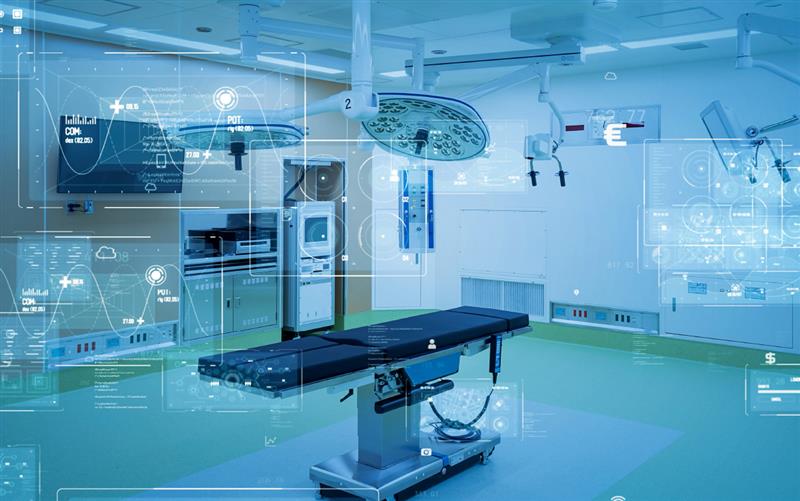The healthcare industry continues to face unprecedented challenges in the aftermath of the COVID-19 pandemic. Procedural backlogs, exacerbated by staffing shortages and strained healthcare resources, have left hospitals and clinics struggling to provide timely care. As identified in our QUICK PULSE study and discussed in our pre-conference post leading up to The MedTech Conference, general practitioners (GPs) and nurses are dealing with the pressure of delayed diagnostics, treatments, and surgeries.
At The Medtech Conference, we heard from leading healthcare practitioners on the impact of these issues – particularly resulting in frustrations for the patient and healthcare staff, and ultimately creating a culture of animosity in some hospitals. However, the conference also showcased promising advancements in AI and robotics that offer hope for alleviating these burdens.
Staffing Shortages and Automation: A Critical Intersection
One of the most pressing issues discussed at the conference was the acute shortage of healthcare staff. As we show in our report, Canadian nurses and GPs, already overburdened by the increasing number of patients and delayed procedures, are in dire need of solutions that can help them work more efficiently. Automation emerged as a critical component in addressing these issues, ranked as the most important innovation by almost 60% of GPs and 40% of nurses. Technologies that automate routine tasks can free up healthcare professionals to focus on more complex, patient-centric care.
During one panel session, healthcare leaders emphasized the potential of robotics to reduce the physical strain on staff. On the exhibit floor, we saw Able Innovations’ ALTA Platform, an example of robotic automation, which is designed to automate patient transfers, a task that is labor-intensive and can contribute to staff burnout. By allowing a single healthcare worker to transfer patients without exertion, solutions like ALTA improve both worker safety and patient care.
What makes technologies like the ALTA Platform particularly impactful is that they align with the broader goals discussed at the conference: improving workflow efficiency without adding complexity to daily operations. During discussions, several panelists agreed that while the integration of robotics in healthcare is essential, it must be done in a way that complements—not complicates—existing workflows.
AI’s Role in Diagnostic Efficiency
Diagnostic delays are another major contributor to the procedural backlog crisis. As diagnostic imaging and analysis take longer to process due to staffing constraints, conditions like osteoporosis, cardiovascular disease, and even cancer are diagnosed later than they should be. According to our survey, over 40% of GPs state that these delays often or always lead to worse patient outcomes. However, at the MedTech Conference, it was clear that AI-enabled tools are showing great potential in speeding up these critical processes.
16Bit exhibited their AI-driven system, Rho, which has the potential to be a game-changer for screening osteoporosis. By leveraging routine x-rays to opportunistically screen for low bone mineral density, Rho offers a way to diagnose patients who may otherwise go undetected due to the low utilization rates of traditional DEXA scans. Rho integrates into existing healthcare workflows, offering radiologists and clinicians faster but accurate diagnostic data, ultimately reducing the time spent on screenings and helping to address procedural delays in imaging.
In addition to AI improving imaging timelines, Samay Health’s Sylvee was another standout at the conference. Sylvee is an AI-powered wearable device that continuously monitors respiratory health, particularly for patients with Chronic Obstructive Pulmonary Disease (COPD) and asthma. Sylvee provides a solution that can enable patients to more closely manage their condition, reducing the need for frequent hospital visits. Sylvee’s real-time analysis of respiratory data allows for early detection of exacerbations, helping healthcare providers intervene before the patient’s condition worsens, thus reducing hospitalizations and emergency care admissions.
Real-Time Insights for Better Decision-Making
Another critical point of discussion at the conference was the need for real-time insights during diagnostics and procedures, particularly in complex patient cases. Moonrise Medical’s AI-enabled ultrasound technology offers one such solution. The device provides real-time feedback on blood flow and vascular health, helping clinicians make informed decisions on the spot during interventions like revascularization procedures.
This technology offers a direct response to the delays in vascular diagnostics, which often result in worsened patient conditions and additional procedural backlogs. By addressing vascular issues early and effectively, this AI technology reduces the strain on emergency services and post-operative care, both of which are often overloaded due to delayed or ineffective initial treatments.
Addressing the Broader Issue of Procedural Delays
While AI and robotics offer powerful tools for addressing some of the challenges associated with procedural backlogs, the conference underscored that these technologies alone cannot solve all the problems. Systemic issues like staffing shortages, communication breakdowns between departments, and inefficient referral systems still require attention. This is in line with data gathered from our survey, in which 30% of GPs stated, unaided, that there is a critical need to build a centralized referral system to address current issues.
However, the conference also highlighted that when combined with better workflow management and improved communication systems, AI and robotics can be integral to building a more resilient healthcare system.
Conclusion
The MedTech Conference provided a comprehensive look at how AI and robotics are beginning to reshape the healthcare landscape. From automating routine tasks like patient transfers to improving diagnostic timelines with AI-driven tools, these technologies show great promise in alleviating the strain of procedural backlogs. However, the broader success of these innovations will depend on how well they integrate into existing healthcare systems and workflows.
While staffing shortages and procedural delays remain critical challenges, the conference made it clear that the path forward involves not just adopting new technologies but also rethinking how care is delivered, managed, and coordinated. In the post-COVID era, these innovations offer a glimpse of a more efficient, patient-centered healthcare system—if we can implement them thoughtfully and effectively.




